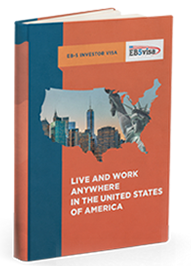What are EB-5 Projects?
EB-5 is an investment visa leading to a Green Card, where the applicant is required to make $900,000 to $1,800,000 plus the processing overhead cost, legal and filing fees of investment in a new venture or in rural or economically less developed areas or in Government designated regional centers with the aim of generating jobs, generally at least 10 full time jobs.
This makes it essential that the EB-5 applicant chooses the right project, because he would have to stick with his choice for the entire time period and his entire work authorization status depends on that project. The EB-5 investments, as per the government visa guidelines (USCIS guidelines) needs to be directed to EB-5 projects that would be considered to be new commercial enterprises that would lead to creation of 10 new full time jobs for American workers. EB-5 projects could belong to any category like mixed-use retail, office buildings, hotels, convention centers, sports stadiums, casinos, restaurants, agriculture-based enterprises, biotech and medical technology ventures, electric and hybrid vehicles, manufacturing ventures, assisted or senior citizen living, etc. Of these, assisted living or senior citizen housing facilities are gaining immense popularity among the applicants for the EB-5 visa.
New commercial enterprises in this case would be defined as lawful, for-profit businesses created after 11/29/1990. Older enterprises would qualify as EB-5 investments only if they are in need of significant restructuring or changes that would lead to increase in number of employees or net worth by 40%.
A lot of applicants are not so aware of the details of the EB-5 and end up getting confused or making the wrong choice of the project. Doing the due diligence could save the applicant from future trouble and woes.
The EB-5 project being selected has to be compliant with the Matter of Ho. An applicant should thoroughly go through the associated risks, the project job generation, exit strategy, credentials of the project, required funding and fees, etc. of the project before taking the leap of faith. Studying the number of other investors already committed to the project and doing a little research on their status or getting their feedback if possible, might help the applicant in making the right decision. Careful meditation over the financial statements and projections of the project is essential. Nobody can make 100% accurate predictions, but given a considerable margin of error or influence of uncontrollable circumstances, the financial estimates must give a fair idea of how robust the project is and how would it assist in the EB-5 investment.
Choosing a project to invest upon as part of the EB-5 program is a prerogative of the applicant of the visa and nobody else gets to control that decision. Assistance from qualified professionals may be taken, but the final word has to be the applicant’s based on his understanding and his grasp of the project. Doing this the right way requires a considerable amount of homework and background research to be done so that nobody can make a fool out of the applicant, and the applicant can make a wise, informed decision. Ask questions, get answers, think things through and then take the plunge.



 English
English.png) Chinese(Simplified)
Chinese(Simplified) Italian
Italian Polish
Polish Portuguese
Portuguese Russian
Russian Spanish
Spanish




